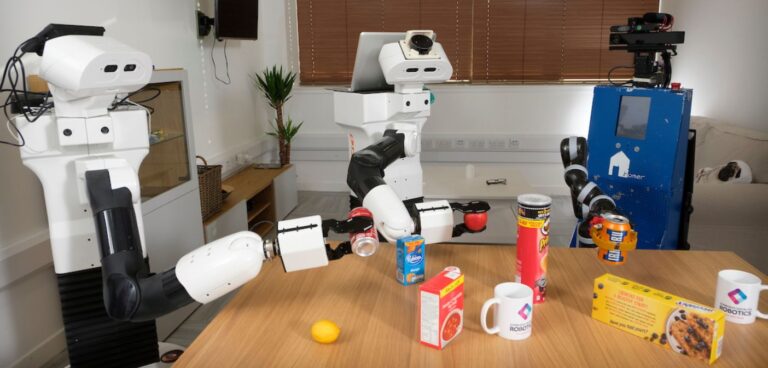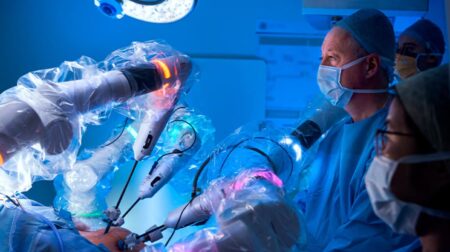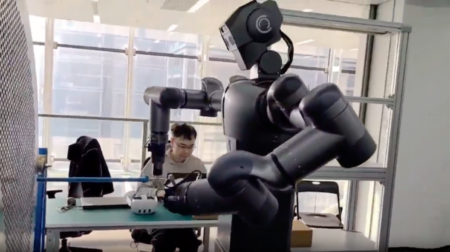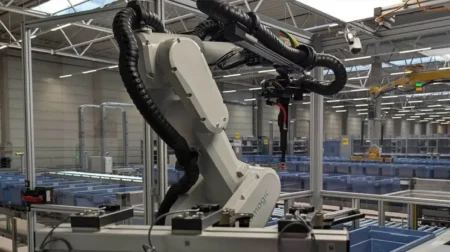The National Robotarium has brought together professionals from both robotic and social care sectors to demonstrate solutions for assisted living technology users.
Supported by the world’s first open and remote assisted living laboratory, the project aims to prototype new solutions and accelerate technical designs to tackle multiple care and assisted living challenges.
Dr Mauro Dragone, an assistant professor and director of the Robotic Assisted Living Testbed (RALT), based at Heriot-Watt University, explained: “Our assisted living lab is set up to operate like a real flat with a kitchen, living room, bathroom and bedroom.
“Throughout the home, we have connected sensors, domestic robots and other assisted living technology to help care practitioners, designers and end users to test the usefulness of assisted living technologies.
“Through our Open Ambient Assisted Living project, we have recently equipped our laboratory to offer real-time interaction with its sensing, automation and robotic equipment, over the internet.
“This provides a platform that researchers, technology and industry users can use to co-create technology, where time and distance is no longer a barrier – any time, any place access.
“The aim is to catalyse and support collaborations to more quickly develop innovative concepts of assistive living technology to be considered for mass-market roll-out and rapid uptake.”
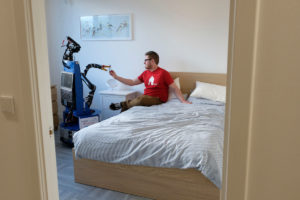
One project trialled in the RALT is the ‘Earswitch’ which can be used to operate multiple devices using an ear muscle alone.
According to its creator primary care practitioner, Dr Nick Gompertz this could significantly improve the independence of thousands of individuals with a range of assisted living needs.
Gompertz previously proved voluntary movements of the eardrum could be filmed and then used to trigger a virtual keyboard for MND and complex stroke sufferers.
The Earswitch team also worked with smart home company, Function Control to operate real home functions including lighting, heating and motorised blinds during the live trial, and with assistive tech companies Smartbox and GetTecla.
As well as controlling simple switching commands, the team now intends to combine biometric data from the Earswitch with smart home monitoring data to build a picture of a person’s overall health, daily routines and activities in the home.
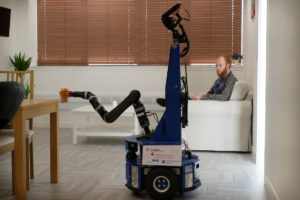
Also demonstrated was the Curi-O service, a social telepresence robot which could be used by healthcare professionals to perform routine check-ups and provide social, cognitive, and physical assistance.
Rakin Sarder, MSc student in Human-Robot Interaction at Heriot-Watt University, said: “Many medical treatments require patients to follow specific recovery guidelines following their discharge.
“Studies have shown that this recovery process can be a challenging phase for patients, especially if they have physical or cognitive impairments. Solutions such as in-home nursing are expensive.
“Curi-O service could be used by healthcare professionals as a telehealth, telemedicine, telemonitoring and teletherapy medium, enabling them to perform routine check-ups and generally provide social, cognitive, and physical assistance through a social telepresence robot when needed.”
Furthermore, the Hermes Holistic Messenger was also showcased within the RALT. This solution is designed to augment virtual communication tools used in befriending applications, reducing isolation and improving the befriending experience.
The recent showcase was run in partnership with Product Forge, the Usher Institute and Design Informatics at the University of Edinburgh and Scottish Health Innovations Ltd (SHIL).

